Nations of Canada
Sailing Into Canada’s Great ‘Northern Sea’
In the fifteenth instalment of his series on the history of Canada, Greg Koabel describes Henry Hudson’s tragic 1610-11 voyage to the saltwater bay that now bears his name.
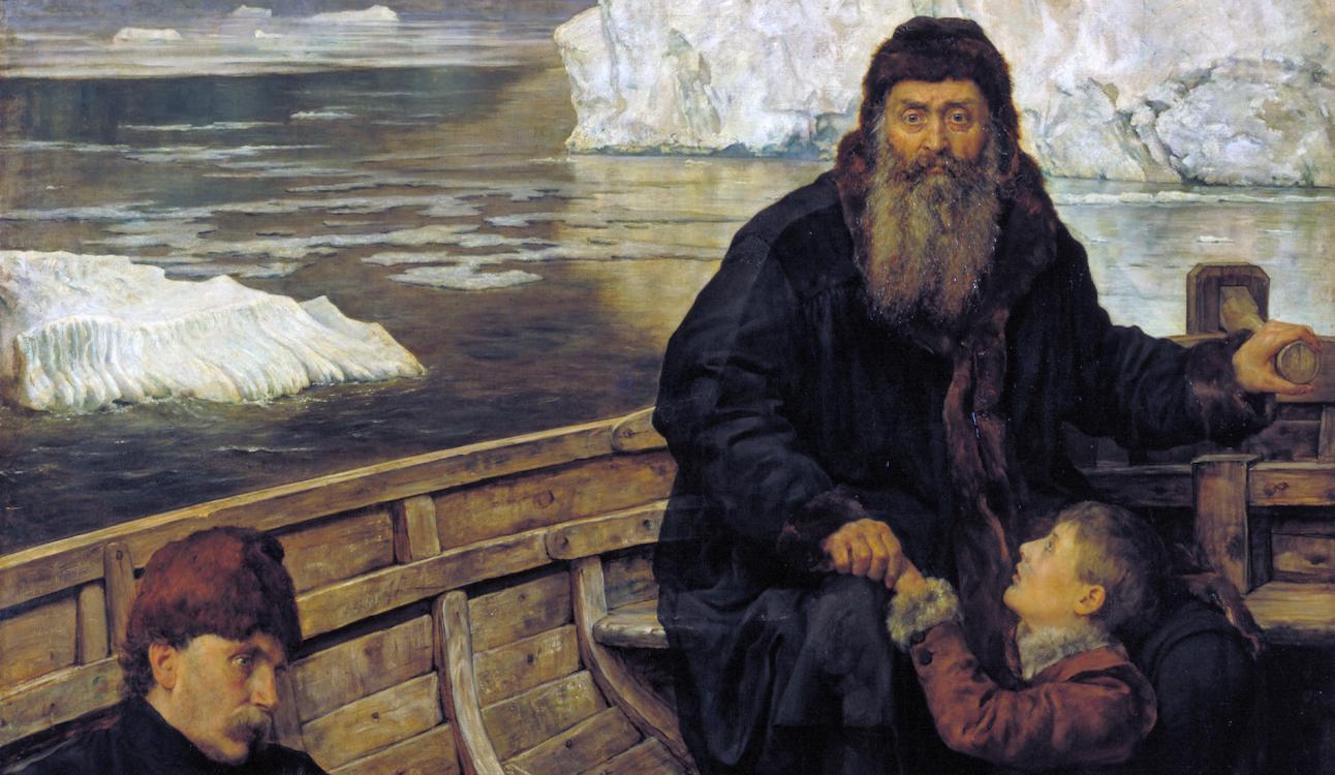
What follows is the fifteenth instalment of The Nations of Canada, a serialized Quillette project adapted from Greg Koabel’s ongoing podcast of the same name.
In November 1609, Henry Hudson was in a predicament. The 45-year-old English whaler-turned-explorer had managed to get himself ensnared in a high stakes game of international politics, running afoul of both the government of his native England, and his recent Dutch employers.
Tasked by his backers in Amsterdam with finding a passage around the north coast of Russia, Hudson had actually convinced his crew to sail in the opposite direction, in hopes of finding the fabled “Middle Passage”—a waterway that cut through the middle of North America. In this, Hudson failed. But he did succeed in sailing up the Hudson River, through the modern state of New York. The Hudson didn’t provide access through the continent, but it did open up an alternative access point to the Great Lakes fur trade, which in time would allow the Dutch to compete with the French commercial operation on the St. Lawrence River.
At first, however, Hudson’s Dutch investors were not impressed. He’d gone rogue, and totally ignored his instructions. If he sailed back to Amsterdam, Hudson knew, he’d likely face severe punishment. He had, in effect, stolen a vessel from the Dutch East India Company, and had little in the way of immediate tangible returns to show for it.
Hudson was unlikely to receive a warm welcome in England either. During his odyssey that summer, he’d sailed into the waters of the Virginia Company without authorization, an action that could expose him to criminal prosecution. Nor would his discovery of the Hudson River (officially, in the name of the Dutch republic) win him many friends in London. England had its own claims on the northeastern coast of North America. And the involvement of the Dutch would only complicate matters.
But while both England and the Netherlands had their own reasons for punishing Hudson for his wayward behaviour, they were also curious to know what he’d gotten up to over the past several months. For all anyone knew, Hudson’s men had been stuck in the ice north of Russia all this time. But suddenly, his ship, the Half Moon had appeared off the coast of Ireland in late 1609, approaching from the opposite direction. The wily Hudson decided his best option was to play on the curiosity of these two Protestant powers.
After making landfall at the English port of Dartmouth, Hudson met with the mayor, Thomas Holland, who also happened to be a close associate of Robert Cecil, the Earl of Salisbury—the King’s Secretary of State and spymaster. Salisbury (among other court notables) had invested in two Arctic voyages that Hudson had carried out previously for England, in 1607 and 1608.
Knowing this, Hudson openly admitted to encroaching on the Virginia Company’s claims by visiting Chesapeake Bay, confident that the powers that be in London would be more concerned by how his discoveries would affect Dutch ambitions in the region. Manhattan and the Hudson River fell within the territory claimed by the Virginia Company. But if the Dutch planted traders and colonists on the river before the English—“facts on the ground,” as it were—those claims wouldn’t carry much weight. (As it turned out, Hudson had already travelled his namesake river as far as it was navigable—up to the area of modern Albany, NY. It flowed from north to south, and did not act as a passage through the North American continent, even if the construction of the Erie Canal in the early nineteenth century would eventually link the river to the Great Lakes.)
Always thinking of his next move, Hudson now sought to drum up interest in finding a Northwest Passage around the North American land mass, the project that had once drawn Martin Frobisher into the Arctic.

Hudson, who’s already tried, and failed, to get to the Orient through the Russian Arctic and modern New York State, had reason to think this third plan was worth a shot. Frobisher, he reasoned, hadn’t done a very thorough job of exploration, as his 1570s-era voyages had become focused on mining (non-existent) gold—resulting in a financial scandal that had soured the English Crown on the Canadian Arctic for years to come.
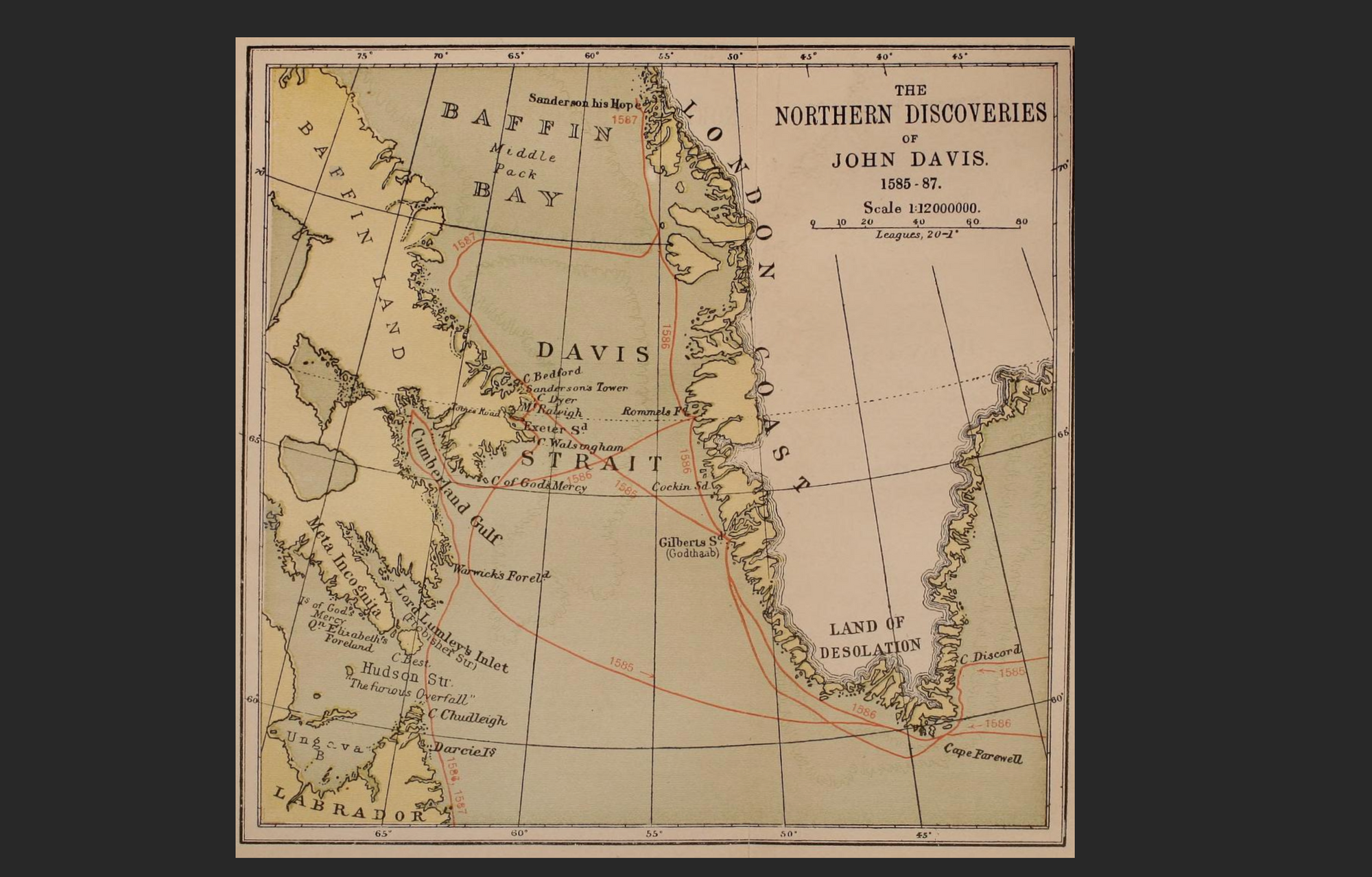
It hadn’t been until 1585, seven years after Frobisher’s project came to ruin, that England returned to the initial goal of finding a passage through the ice. An explorer named John Davis convinced Queen Elizabeth’s court to finance three voyages, during which he discovered what looked like a strait between Baffin Island (the land mass on which Frobisher had mined for gold) and mainland Canada. Davis, who was far more deliberate in his study of the Arctic seas, noted that the passageway looked more like a strait than the entrance to a bay. He named the narrows Furious Overfall, after its powerful tidal rip. But Davis was unable to press on through the strait. The unpredictable tides and ever-present ice floes made it too dangerous.
For the next fifteen years, English interest in the Northwest Passage remained dormant, in part because months after Davis returned from his final voyage, England had to scramble every naval asset it had to ward off the Spanish Armada. In the years that followed, the war with Spain dominated the government’s attention.
When English interest in the Northwest Passage did rekindle in the early seventeenth century, the project was led by merchants seeking to mimic the Dutch. The English East India Company was founded in 1600, its structure modelled on the similarly named entity that would eventually send Hudson to explore the Russian Arctic.
One of the first voyages sponsored by the English company was led by George Weymouth, a West Country navigator and mathematician best known for his later explorations in what is now Maine. Weymouth was determined to follow up on Davis’ theory that the narrows at Furious Overfall marked the beginning of a passage that led past the American continent. In 1602, he managed to sail a few hundred kilometres into the strait. But in late July, Weymouth turned back, worrying that he risked getting trapped in ice once the brief Arctic summer ended.
Despite probably getting further along the Northwest Passage than any European before him, Weymouth seems to have been discouraged by the hardships of the voyage. When he returned to England, he focused his energies on the colonization of the Atlantic coast, rather than the Arctic.
Further discouragement came in 1606, when another explorer, John Knight, had an even grimmer experience in the Canadian north. Knight’s goal had been to map the north Labrador coast, up to the straits at Furious Overfall. But it was rough going. Storms battered the ship, and ice floes down from Greenland posed a persistent threat. At one point, Knight and three of his crewmen travelled inland to scout out a location to beach the ship for repairs. They were never heard from again. The remaining crew assumed Knight and his companions had been attacked by hostile natives (possibly Innu or Inuit), and sailed for home.
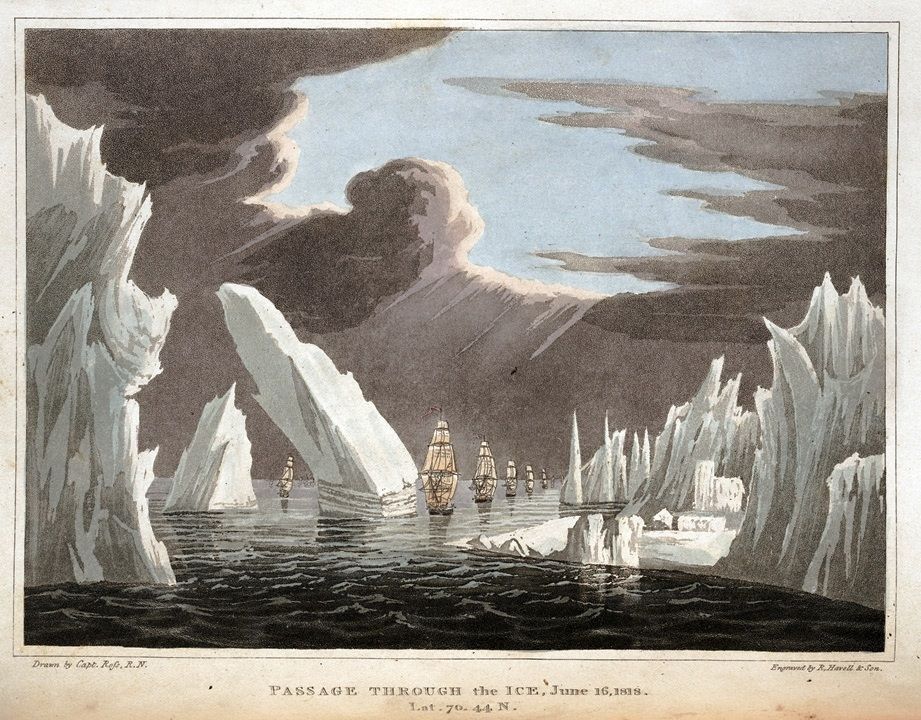
But while that was the official story, rumours swirled back in England. Apparently, there’d been a great deal of tension between Knight and some of his sailors. The captain was taking too many risks, they complained, and sooner or later the ship would finally give out. There were questions about how willing (maybe even eager) the crew had been to abandon their captain.
The chain of command on a seventeenth-century sailing vessel was rigidly prescribed in theory. In practice, however, winning and maintaining the confidence of a crew operating in dangerous waters could be a daily battle for men such as Knight and Hudson—a lesson that, as we shall see, at least one of them learned the hard way.
Hudson’s confidence that he could succeed where Davis, Weymouth, and Knight had failed could be traced to our old friend Samuel de Champlain. In terms of their personalities, the two men were a study in contrasts—the reckless English rogue who always seemed to be going double-or-nothing on the high seas, versus the fastidious company man who spent his life criss-crossing the Atlantic, dutifully shoring up support among both Parisian nobles and Indigenous leaders. But they shared a common fascination with the North American continent.
As part of Champlain’s lobbying attempts to restore the French fur-trading monopoly, he’d published an account of his initial 1603 voyage to the St. Lawrence. Hudson got himself a copy at some point before his voyage up the Hudson River in 1609. In that book, Champlain noted that the Innu of Tadoussac told him of a great “northern sea.” Champlain estimated that its shores were much further south than the strait at Furious Overfall. In this, he was to prove correct: Just west of that strait, a great bay cut over 1,500 km to the south.
In light of this speculation (such as it then was), Hudson suspected that Weymouth had been too tentative back in 1602: Had he just pressed on through the channel, he could have turned south and wintered in a much more temperate zone.
As he sat in Dartmouth in the winter of 1609-1610, fearing rough treatment by the English and Dutch alike, Hudson seized on Champlain’s northern sea as his path to redemption (in English eyes, at least). Either the northern coast of the North American land mass continued to slope southwards until it reached the Pacific, or there might be a riverway that connected with the St. Lawrence, upriver from the great rapids (at modern Montreal) that had been blocking French progress upriver.
In January 1610, this gambit paid off. Rather than sending Hudson on to Amsterdam, the English authorities decided to back his plan for one more search for the Northwest Passage.
It likely says something about Hudson’s charisma that some of the most prominent investors in England bought into the project, despite the fact that it was to be led by a man with a shady reputation. The most important of these investors was Thomas Smythe, then a dominant force in London commerce. Hudson knew Smythe from his previous Arctic voyages, in the latter’s capacity as governor of the Muscovy Company. Being a man who wore many hates, Smythe was also the governor of the East India Company, as well as the de facto head of the Virginia Company. If there was an overseas business opportunity to be seized in London, Smythe was buying in.
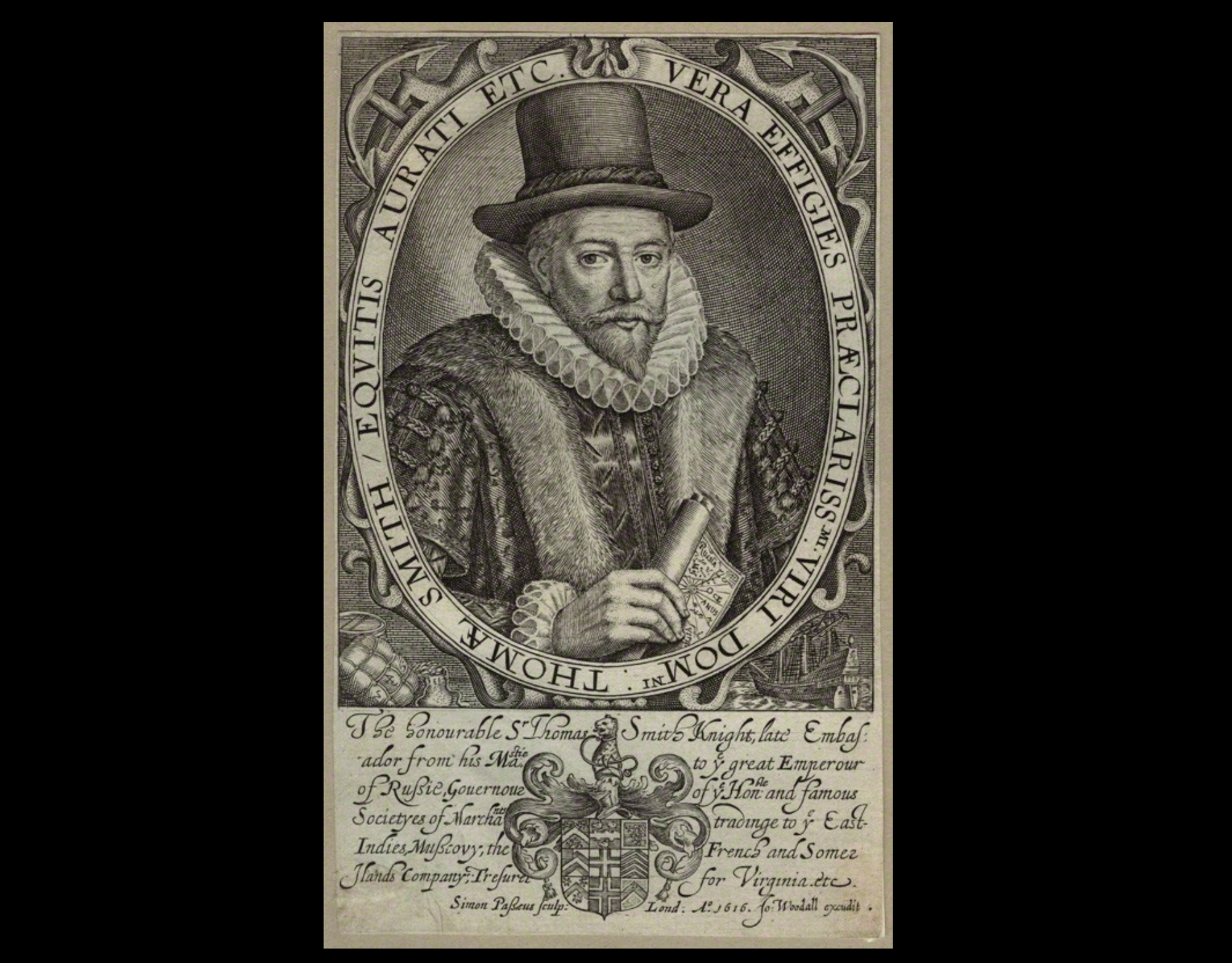
To Smythe, Hudson must have seemed a mixed bag. On the one hand, the explorer had already completed three voyages into some of the harshest climates in the world—two for the English and one for the Dutch. If anyone had the skill and tenacity to finally push through the Northwest Passage, it was Hudson. But during each of these voyages, he’d attempted to re-write his mission at sea, in defiance of the investors who’d funded his travels. And so Smythe and the others concluded that this time around, Hudson required close corporate supervision.
Rather than giving Hudson a free hand in selecting his crew, the investors appointed his first mate—a veteran navigator known to history as Colbreth, who’d served in this position on the Weymouth expedition of 1602, and so had first-hand experience with the seas they’d be entering. In fact, the ship Hudson would be sailing was the Discovery, the same one Weymouth had used eight years before.
The first mate played an important role on a seventeenth-century ship. He took navigational observations independent from the captain (a redundancy designed to avoid mistakes), played an important role in decision-making, and was well-positioned to rally the crew in the face of suspect choices made by the captain. Colbreth had done this very thing back in 1602, when Weymouth had wanted to press on through the Arctic in July, while Colbreth backed the majority of crew in opposition. As noted above, Weymouth conceded the point (and so, unlike Knight, made it back to Europe).
The investors also had a more official representative on board—one Abacuk Pricket. He filled a role similar to that of William Weston, the Bristol merchant we met back in the fourth instalment (John Cabot’s New Found Land), who’d acted as cargo agent on behalf of owners underwriting trips between Bristol and Lisbon. Pricket wasn’t so much part of the crew as he was an arm’s length observer, upholding the interests of the investors. The hope was that, between Colbreth and Pricket, there’d be enough oversight to ensure that Hudson behaved.
In late April, 1610, the voyage began, and the Discovery headed out to sea with a complement of 22 men. But before crossing the Atlantic, Hudson put into shore to re-arrange his roster. Departing the ship was Colbreth, his first mate. Hudson offered no explanation for this change, but it’s likely that he simply wanted to get rid of one of his minders. Crew member Robert Juet, Hudson’s mate on his 1609 voyage, was now promoted to his old post.
Hudson also brought aboard another new crew member, who, as Pricket would complain, was not on the official payroll. This was Henry Greene, a young man from Kent who’d been disowned by his prosperous family because of his dishonourable conduct. Pricket noted that Greene was a gambler who, “by his lewd life and conversation,” had “lost the good will of all his friends.”
Why Hudson enlisted Greene, who had little experience in naval affairs to balance his scandalous reputation, is a bit of a mystery. The explanation that makes the most sense is that Greene was well-educated, and so perhaps Hudson wanted him to write an account of the voyage for publication. As a reward, Hudson held out the possibility of social redemption, hinting at an appointment to the personal honour guard of Henry, Prince of Wales, who was one of the voyage’s backers.
It didn’t take long for the roster shuffle to cause problems and lower morale. Within days, Greene got into an altercation with the ship’s surgeon, Edward Wilson, and even gave the man a beating when they made landfall in Iceland. Understandably, Wilson had no interest in spending the next few months sharing space on a cramped ship with his assailant. Hudson refused to punish his controversial protégé, yet somehow managed to coax Wilson back onto the ship.
Things didn’t improve much once they left Iceland. Over drinks one night, Juet speculated that Greene was a spy whom Hudson had recruited to serve as his eyes and ears among the crew. This was an accusation to be taken seriously—first, because Juet knew the captain well; and second, because Hudson had recently promoted Juet to first mate on the expectation that he’d be loyal. The fact that Hudson was losing the faith of even this chosen deputy was a damning development. And all of this was before the hard work of Arctic exploration had even begun.
In the first week of June, the crew of the Discovery encountered its first real maritime challenge while sailing through Ungava Bay, the oval indentation in the north coast of modern Quebec. For two weeks, all thought of further westward progress was abandoned, as they focused their energies on dodging icebergs. At one point, a giant island of ice suddenly capsized, creating waves that nearly winked the Discovery out of existence.
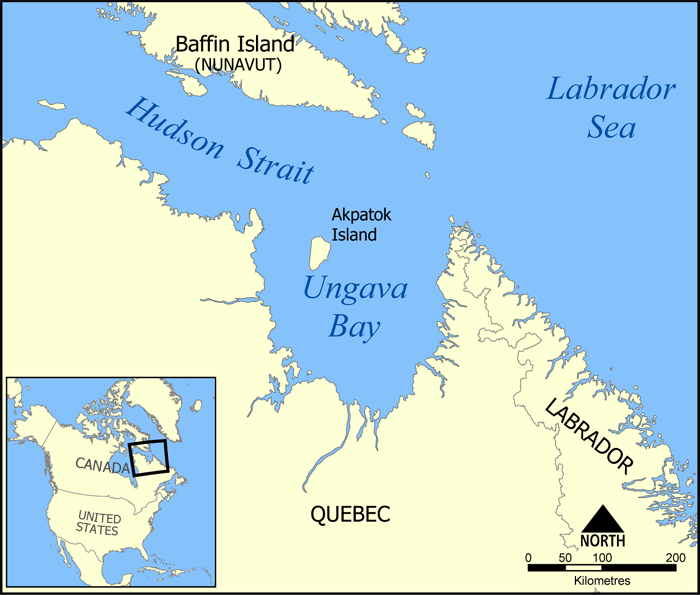
Sensing that his men would not put up with much more of this, Hudson convened a council, at which Juet continued to lead a dissenting faction within the crew. But Hudson won a mandate to press on. It was still early in the summer, and so it wasn’t unrealistic to hope that the ice would recede.
This decision paid off in July, when Hudson led the ship out of Ungava Bay into the long sought-after strait—which, like the river situated more than 2,000 km to the south, would later be named after Hudson. (Indeed, it says something about the astounding reach of the man’s explorations that Arctic icebreakers and Manhattan ferries both ply bodies of water named in his honour.)
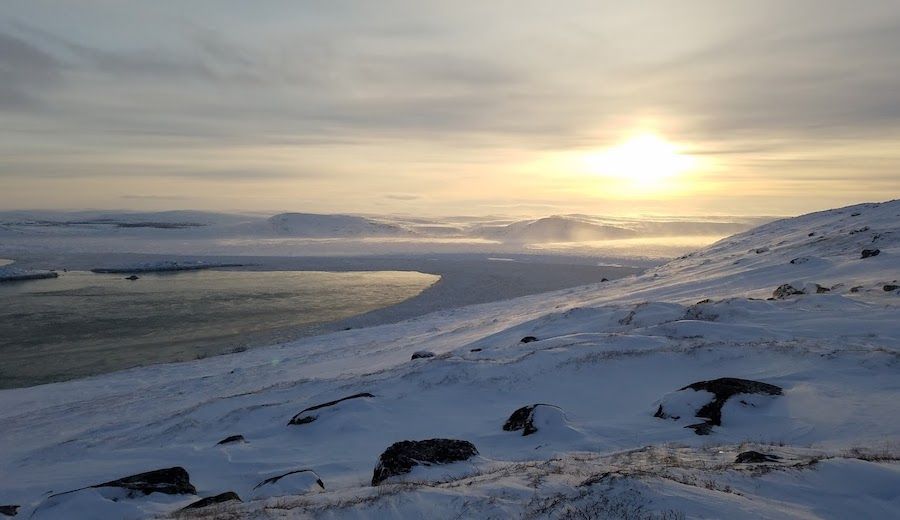
By the end of the month, the Discovery had travelled further west past Furious Overfall than any European ship to date. And by the first days of August, the crew sighted open seas: The shore gave way in almost a direct line to the south. This seemed to confirm Hudson’s suspicion that there was a direct link between the North Atlantic and Champlain’s “northern sea.”
Hudson held another council once they’d reached the Digges Islands (as they came to be known, in honour of one of the voyage’s investors), situated off the northwestern corner of Quebec. To the east ran the channel they’d just passed through. The coast ran in a straight line to the south, into the interior of the continent.

Hudson presented his men with three options. The first was the safest: head back and report their findings to Smythe and the other investors. Technically, that was their mission, as this first voyage was intended as an exercise in reconnaissance. They’d scouted the strait and proven that it did indeed lead into open ocean on the other side, just as Hudson had believed.
But if the Discovery were to make it back to England before the winter, it would have to turn around immediately, since ice would probably soon be choking the channel within a few weeks. Moreover, the expedition had been outfitted with only eight months worth of provisions. In order to survive the winter, they’d have to (at least partially) live off the land.
However, the choice was not as obvious as that description might suggest. For men who’d just spent weeks dodging icebergs, the prospect of immediately going back the way they’d come was not particularly appealing. And the provision shortfall wasn’t a big problem, since the Digges Islands hosted one of the world’s largest nesting colonies of murres. These penguin-like birds, packed densely on shore, provided a supply of food that was, for the crew’s purposes, infinite.
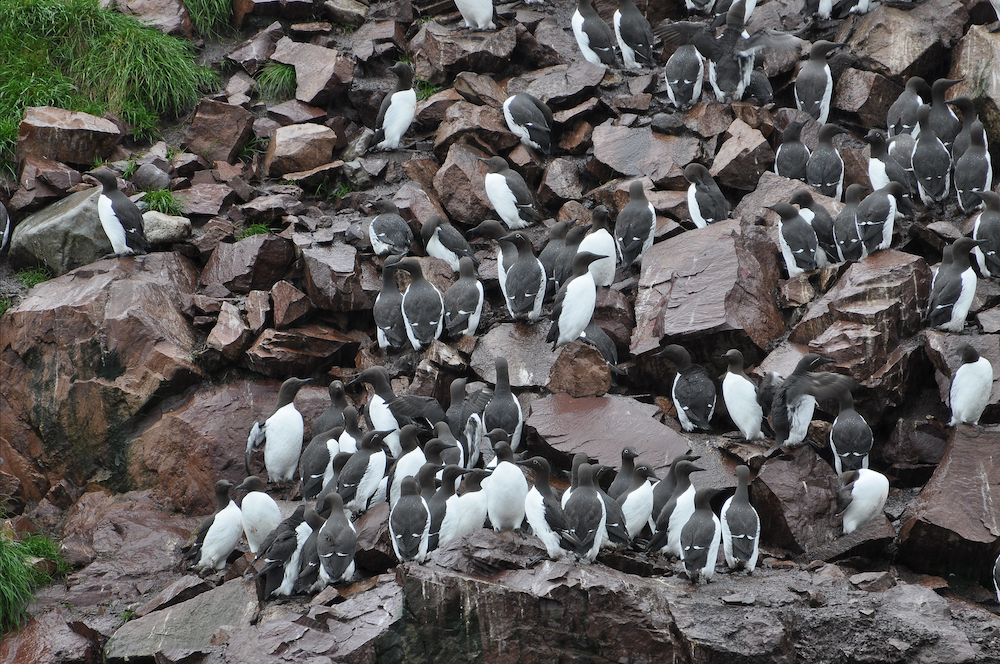
There were reasons, therefore, to hear Hudson out on his other two options.
They could continue west at this latitude, Hudson said, in hopes of finding the Pacific before winter came on. According to traditional European understandings of the (as yet undiscovered) Northwest Passage, it was assumed that the path to the Pacific would end at roughly the same parallel as it began on the Atlantic side—an assumption somewhat supported by bits and pieces of rumour that had come by way of Spanish explorations of the Americas’ northwest coasts.
But continuing westwards was not a popular proposition with the Discovery’s crew. Who knew how long it would take to get to the Pacific, even if such a route existed? Getting stuck in the ice seemed the likely outcome.
Like a good politician, Hudson had saved his preferred choice for last—a choice that had likely been his secret goal since the outset of the voyage: the southerly route, into the great northern sea he’d been dreaming about since reading Champlain’s (speculative) description of it.
For sailors concerned about the onset of winter, the idea of heading in the opposite direction from the North Pole was inherently appealing, even if it meant spending the winter on the wrong side of the Atlantic. And the fact that this great northern sea now bears Hudson’s name—along with the strait and the river—should be enough to tell you which option the crew chose.
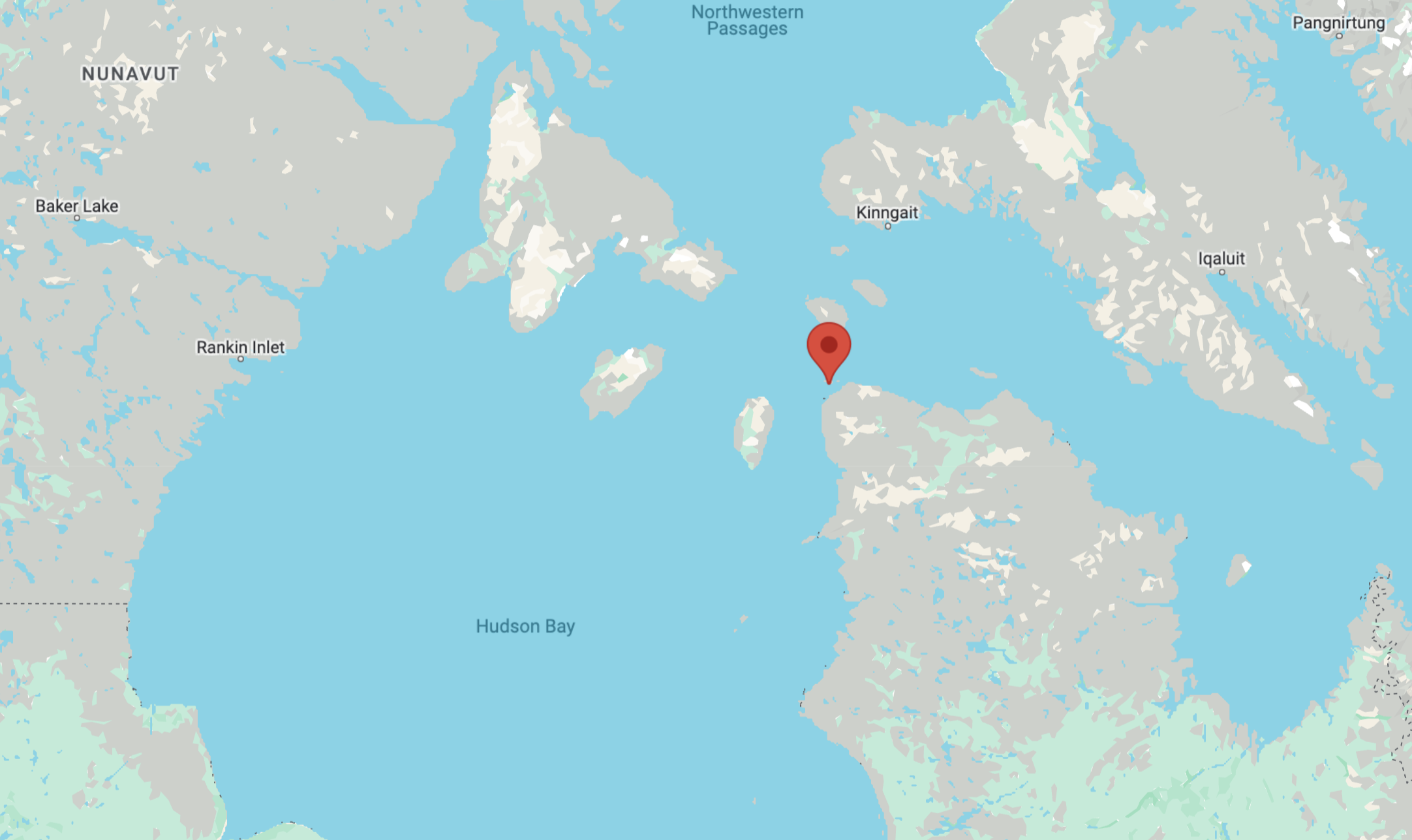
Before leaving the Digges Islands, however, a landing party made two discoveries. First, they came across large deposits of sorrel grass, a bitter herb that helped stave off scurvy. Secondly, they discovered that they were not the only people looking to feed off of the local bird population. The crew came across several stone cairns within which were murres drying on racks. Although no one saw other humans in the area, this was clearly evidence of a local Inuit population.
As the French had discovered on the St. Lawrence, access to a friendly indigenous population could be an invaluable—if not life-saving—resource during a Canadian winter. But Hudson’s men were more anxious than reassured. Following clashes with Martin Frobisher’s crew, and the presumed murder of John Knight, the Inuit had developed a fearsome reputation in England. Meeting the locals, therefore, was not a big priority.
Well-stocked with birds, sorrel grass, and the knowledge that they were not alone, the crew of the Discovery spent the rest of August making their way down the east coast of Hudson Bay. From here on out, our knowledge of the voyage is limited. After the council at the Digges Islands, Hudson’s official journal is silent. These pages were perhaps torn out by English authorities after the voyage, in an attempt to keep Hudson’s discoveries an English state secret. Or perhaps they were destroyed by his crew, who—for reasons that will become clear—had an incentive to obscure details of the events that followed.
What we do know comes from Pricket’s report to his superiors within the investors’ group, as well as court testimony from the expedition’s survivors.
The next incident we can date with any precision came in early September, after the Discovery had entered James Bay, at the southernmost extremity of the (much larger) Hudson Bay. Tensions were now rising, as all southern progress was blocked by land, and Hudson did not seem to have a plan.
Once again, first mate Robert Juet provided a focus for discontent. The crew was divided into two camps, one supporting the captain, and the other (Juet prominently included), questioning Hudson’s leadership. On September 10, Juet asked for a public hearing. Some of the pro-Hudson crew members had been slandering him, and he demanded the opportunity to defend himself. Likely, Juet felt that the majority of the crew was frustrated with Hudson, and an airing of grievances would either force the captain to submit to his critics’ demands or serve to remove him from power entirely.
If that was Juet’s goal, the scheme backfired, as he was now outing himself as a mutineer-in-waiting. Witnesses later came forward describing Juet’s persistent insubordination from the beginning of the voyage. After the scuffle between Henry Greene and the ship’s surgeon, Juet had predicted that the voyage would end in manslaughter. And the ship’s carpenter, Philip Staffe, testified that Juet had advised him to always keep a loaded musket on hand, in case violence was necessary. Some claimed that, even back when they were fighting icebergs in Ungava Bay, Juet had suggested ousting Hudson through a mutiny.
In any event, the crew wasn’t ready to heed Juet’s apparent call for insurrection. Nevertheless, Hudson recognized that he was in a precarious position. It was mid-September, so they were fully committed to spending the winter on Hudson Bay’s shores. And it wasn’t clear that the crew’s loyalty would survive what was likely to be a harsh few months.
Finally, there was the problem of Juet himself. It wasn’t feasible to hold him prisoner on their tiny ship, so the best punishment Hudson could come up with was a demotion. Juet was busted down to a regular crew member, and replaced as first mate by Robert Bylot, the only other man with the navigational skills necessary to carry out a first mate’s duties. This was the third first mate serving under Hudson since the Discovery had first left port.
A week later, another incident further eroded confidence in Hudson’s leadership. For several days, the Discovery had been paralyzed by storms, and the crew’s only option had been to drop anchor and ride out the rough seas as best they could. As soon as the poor weather looked set to end, an impatient Hudson ordered his men to raise anchor so they could continue their explorations of the coastline. Several crew members warned the captain that the stormy weather might not be over, and that they should wait to make sure it was safe to continue.
Hudson refused to heed their caution, and, as if on cue, another bout of stormy weather kicked up just as they were raising anchor. The anchor flew free, and its cable badly injured two of the sailors.
Still, Hudson was determined to press on. By this point, they were far enough south that they could freely navigate deep into the fall. But doing so remained dangerous. In late October, the Discovery was pushed onto rocks lying just below the ocean’s surface, whereupon the ship became lodged for a harrowing twelve hours.
Finally, in mid-November, the crew prepared the ship for a winter frozen into the ice. This was a delicate bit of work, even for seasoned mariners. The idea was to have the ship freeze into the ice in such a way that minimal damage was caused to its structure. Minor repair work could be done in the spring; but if the shifting ice cut a large gash in the ship, or if the hull burst due to liquid water expanding into solid form, they’d all be marooned.
Just days after the Discovery had been frozen in place, the crew suffered its first fatality—John Williams, the ship’s gunner. While the cause of death is unclear, it’s certain that Hudson’s reaction to it made everything worse.
It was customary in such situations to auction off the property of a crew member who’d died at sea, but Hudson decided instead to award the gunner’s prized coat to Henry Greene. As you might expect, the favouritism shown to the one unofficial crew member wasn’t popular with anyone except Greene himself. And even he became umbraged when Hudson took the coat back, after Greene and Staffe took an unauthorized walking trip to explore the land near where the Discovery was lodged. Hudson also announced that he would not be supporting Greene’s career, as he’d formerly promised, when they all got home.
The tense, toxic atmosphere aboard the ship must have resembled something like that of the fictional Fort Zinderneuf in Beau Geste—all made worse by the fact that, at this latitude, the ship would have been enveloped in darkness for 18 hours each day.
Remarkably, Williams was the only man to die that winter, though several crew members were weakened by disease (probably scurvy, despite the herbs harvested on the Digges Islands). Conditions worsened as Spring approached, when stores of food were at their lowest. In late May or early June 1611, potential salvation appeared in the form of a lone Indigenous visitor. He was Cree, an Algonquin-speaking people whose communities dot the northern portions of what is now Quebec and Ontario.
Although the Cree of the Hudson Bay region had never met Europeans before, they were part of the St. Lawrence fur-trading network. The Nipissing, who occupied the western end of the Ottawa River trade route, made an annual trip to Hudson Bay to trade for furs, which were then passed down the Ottawa River toward the St. Lawrence. This was the northern end of the commercial chain that a young Frenchmen named Nicolas de Vignau hoped to visit when he embedded with the Kichesipirini at roughly this same time (a development covered in our last instalment).
Hudson invited the visitor on board the Discovery, and traded a dagger and some glass buttons for a beaver pelt and caribou skin. Through hand gestures, the Cree trader seemed to indicate that he would return soon with friends who lived nearby. This raised hopes that the expedition might be re-supplied with food. But after several days of waiting, no one appeared. The men of the Discovery were on their own.
As the ice started to break up in June, the carpenter, Staffe, hammered together a shallop out of materials on board the ship. The small boat would allow them some freedom of movement until the Discovery was fully released from the ice. An initial fishing trip came back with a decent haul, but Hudson soon took command of the smaller boat himself, and led it on a multi-day voyage of exploration of the nearby coast.
This was a significant risk on his part. Hudson was well aware that John Knight’s crew had abandoned him when given the opportunity, and there was no shortage of desperate, resentful men on the Discovery. If the ship were released from the ice while Hudson was gone, the remaining crew could easily sail home, and claim that their captain had disappeared without a trace.
But Hudson was desperate. He knew that the second the Discovery was freed, there would be immense pressure to sail home immediately. He first wanted to find something significant that would allow him to spin this voyage to his investors as a great triumph. It’s possible he was continuing his search for an inland passage, though he also appears to have been looking for a Cree settlement. The men on the shallop repeatedly spotted fires on the coast, but whoever had set them remained elusive.
By the time a frustrated Hudson return to the Discovery, the ice around it was finally breaking up. On the June 16, they were sailing north.
Where exactly they were going was a bit of a mystery though—a mystery deliberately cultivated by the captain. Before setting out, Hudson once again shuffled the ship’s roster. Bylot, who’d replaced Juet as first mate, was now out. In his place, Hudson promoted first mate number four—John King, an illiterate crew member with little experience as a navigator. Even more unusually, Hudson confiscated all the navigational tools aboard the ship. He was now the only one capable of determining their location, or plotting a course. This clear violation of standard operating procedures inspired little trust that Hudson would be guiding them home.
Food was also becoming a problem. The bird meat had run out and, aside from that first fishing haul in the shallop, the men were proving to be mediocre anglers. Hudson decided to dole out their remaining rations evenly. But even this seemingly equitable gesture caused bickering, as some of the healthy men complained that scarce resources were being wasted on those who’d been weakened by illness. The bulk of the food, they argued, ought to go to the men who’d be working hard to save them all.
Late on the night of June 21, months of tension and resentment finally boiled over. A faction within the crew, led by Hudson’s disgraced recruit, Henry Greene, spread the word that there’d be a mutiny before sunrise. The most detailed account of what happened next comes from the investors’ representative, the aforementioned Pricket, an important figure for the mutineers to win over.
As the mutineers knew, Pricket was writing a detailed account of the voyage, and so was in a good position to justify their actions. Moreover, Pricket reported directly to the powerful men in London who were backing the voyage. Those men had the power to provide them with protection—or ruin. Ideally, Pricket would be explaining to everyone back in England that ousting Hudson was the best option.

According to Pricket, he initially refused to join the mutiny, and pleaded with the men to give him 24 hours to convince Hudson to listen to reason. Ultimately, however, he did nothing to stop them. Nor did he try to warn Hudson of what was coming.
Just before dawn, Hudson was seized and bound by the mutineers. Along with his teenage son John, and six of the sickest men, he was forced onto the shallop that was being towed by the Discovery. Initially, they were told that this would be a temporary arrangement, while the crew searched the ship for any food that Hudson had hidden away. But it gradually became clear that the captain and his companions had been banished for good.
When Staffe, the ship’s carpenter, realized what was going on, he refused to remain aboard the Discovery. It’s possible the mutineers had left Staffe in the dark due to his loyalty to Hudson, while also hoping he would accept a fait accompli, since his skills might be needed during the voyage home. But Staffe was adamant. And so, he joined the forlorn occupants of the shallop.
The sun was up by the time the tow line was cut. For a while, the crew of the smaller boat tried to keep pace with the Discovery, but the larger ship easily outran it, until it disappeared over the horizon.
Unsurprisingly, the new command structure on the Discovery was chaotic. Both Greene and Juet vied for leadership, but neither wanted to take official responsibility for ousting Hudson. They settled on a compromise of Robert Bylot (Hudson’s first mate through the winter, until his ouster, and the only qualified navigator on board other than Juet).
At the end of July, they arrived back at the Digges Islands, on the western edge of the channel that would take them back to the North Atlantic. The men put in to shore, hoping to once again find the land blanketed with defenceless birds.
This time, however, the landing party also found a small group of Inuit. Through gestures, the two groups worked out an arrangement, whereby one of the Discovery crew would stay with the main body of Inuit, while a few comrades followed an Inuit guide to the best hunting grounds. The Inuit hunter showed them how to catch the unsuspecting birds with a long stick with a noose attached at the end. The Englishmen chuckled at this technique. Instead, one of them raised his musket and blasted the nearest bird.
The next day, Henry Greene led another group of men to the same spot. The day before, the Inuit had expressed a willingness to trade walrus ivory and furs, in exchange for English weapons, tools, or glass buttons. But this time, something went awry. Perhaps Greene (not noted for his diplomatic skills, even among men who spoke his own language) was too aggressive. Or perhaps the Englishmen, reeking of desperation, seemed like easy prey to the Inuit hunters. But for whatever reason, the impromptu trading session on the beach suddenly turned violent. While the rest of the men were distracted by the haggling, Pricket, who was standing by a beached rowboat, noticed that two of the Inuit were wandering toward him, intent (he assumed) on stealing the boat. One drew a knife and slashed at Pricket, cutting into his forearm.
The beach immediately exploded into fighting. A few minutes later, following a confused melee, Pricket and the rest of the Englishmen were rowing back to the Discovery. Two of them died before they could get back to the ship. Two more, including Greene, had been disemboweled, and died slow, agonizing deaths over the following two days.
The mood on the ship, once grim, was now positively gothic. The Discovery was small enough that everyone was forced to listen to Greene and the other man as they died. The survivors still had to run the dangerous strait into the North Atlantic with a crew of only nine men, some of whom were suffering from scurvy. It must have felt something like a ghost ship.
The next month was a harrowing race for home. The confrontation with the Inuit meant they hadn’t any time to stock up on bird meat, and the food situation was desperate. To compound matters, Juet miscalculated their location, at one point assuring the men they were within spitting distance of Ireland when they were actually in the middle of the Atlantic. Juet did not live to realize the full extent of his mistake, however. He died of scurvy a few days before the Discovery finally put in near Galway, on Ireland’s west coast.
A generous Irish captain then took pity on the cadaverous sailors, buying up some of their rigging and supplies for much more than they were worth. He also helped the Discovery crew recruit some sailors who could guide them home to England. It was September 1611, a year and a half after the Discovery had first set out, and a full year after its scheduled return date.
Once in London, Pricket went straight to Thomas Smythe, the aforementioned financier who’d backed the voyage, to explain, first, why the Discovery was twelve months late in returning, and secondly, where its captain was. Within days, Pricket and the rest of the crew were testifying before state authorities. Their collective story served to blame Hudson for mismanagement and hoarding food, while also identifying Greene and the other Digges Islands fracas victims as the mutiny’s ringleaders (men who, conveniently, could not provide their own accounts).
As it happened, these men need not have worried about how things looked. Smythe and his powerful allies at court were more interested in the intelligence the men had gathered than the fate of Henry Hudson. Their questions revolved mostly around the voyage’s charts and logs. Were they all accounted for? Had Dutch agents got their hands on any of them? Perhaps relieved to be interrogated on a matter for which their consciences were clear, the men assured Smythe and his colleagues that the secrets of the Arctic were safe.
In fact, the only people who continued to raise concerns about the voyage were the family members of those who’d been lost, especially their widows. Henry Hudson’s wife Katherine was particularly vocal in demanding answers. She’d not only lost her husband, but also her son John. Smythe and his colleagues did their best to avoid a scandal, and made sure the family was well provided for. Richard (another of Hudson’s sons) was appointed to a prominent position in the East India Company, handling English affairs in the Far East. Eventually, Katherine joined him, and she became an enterprising figure in the import/export trade.
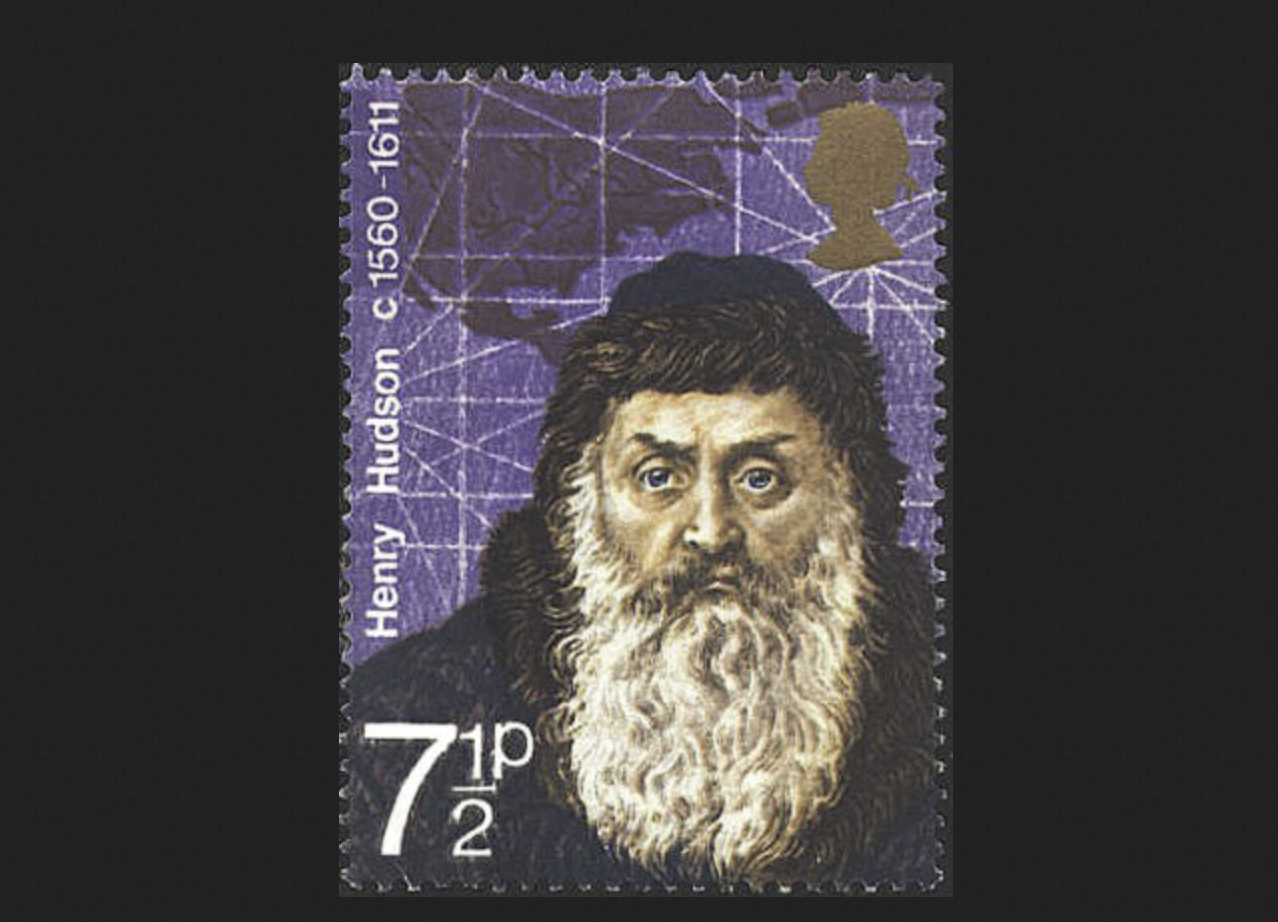
By the spring of 1612, less than a year after the return of the Discovery, the investors commissioned a follow-up voyage under a sailor named Thomas Button. Far from being held to legal account for Hudson’s fate, Abacuk Pricket and Robert Bylot were invited to tag along, so that they could share their knowledge of the region.
Button’s expedition didn’t go much better than Hudson’s. The Englishmen had yet another violent encounter with a group of Inuit at the Digges Islands. (Possibly, these were the same men who’d clashed with Greene the year before, but it’s unclear if that’s the case.) This time, the aggressors were definitely the English, who tried to seize two Inuit umiaks. In the violence (predictably) unleashed by this act of theft, five Englishmen were killed.
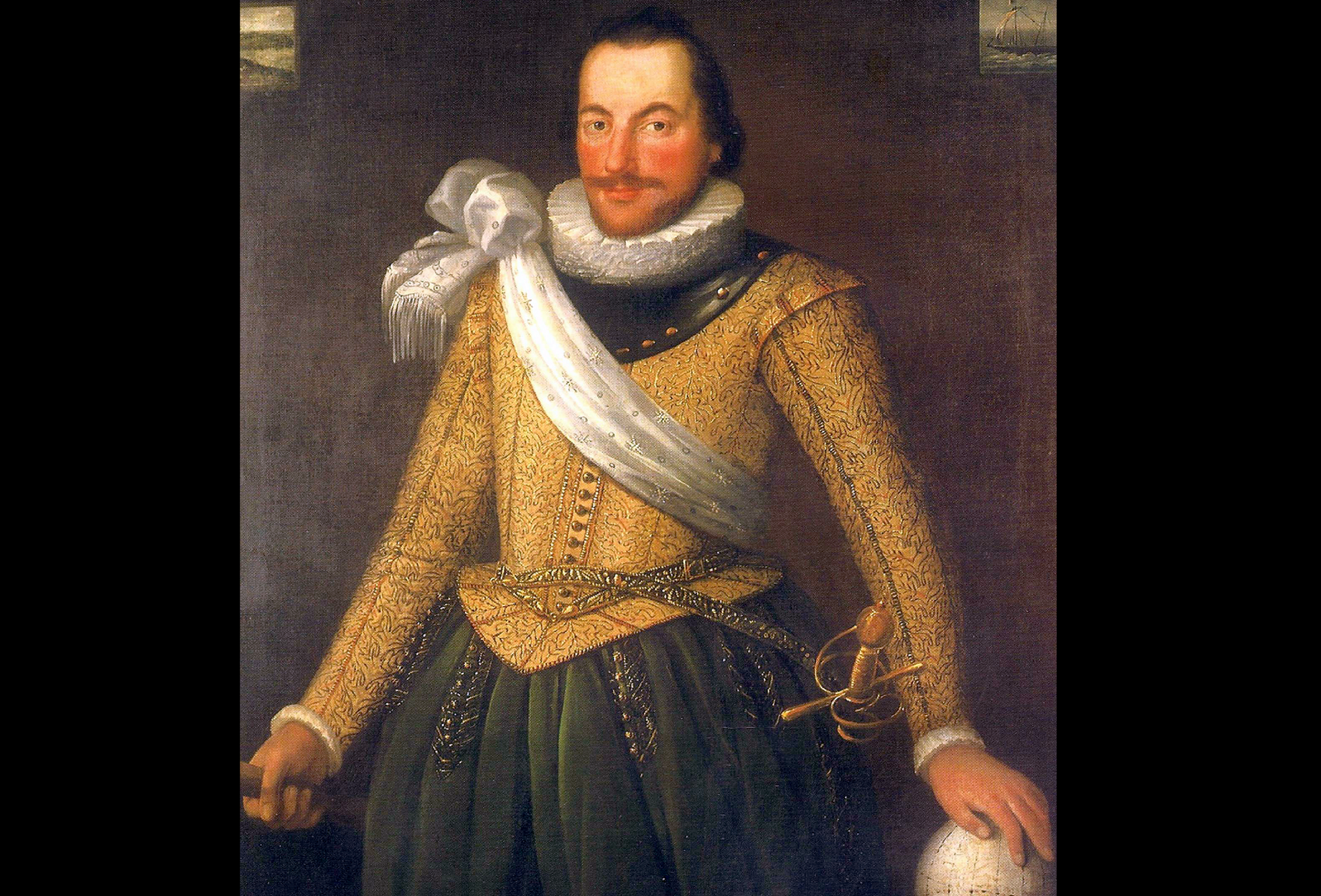
The winter wasn’t much of a success either. Of the two ships on the expedition—the Discovery and another called the Resolution—only the former survived its winter locked in sea ice. Button came no closer than Hudson to finding a passage through, or past, Hudson Bay, and the surviving Discovery barely made it back to England in the summer of 1613. During the last leg of the journey, Button had just eight men fit enough to crew the ship.
The investors backed a few more voyages in subsequent years, some of them led by Robert Bylot, others by an energetic explorer named William Baffin. But by 1616, it was clear that a navigable passage through the continent was a pipe dream. Baffin gave up on Hudson Bay altogether and looked for a passage far to the north, around the massive island that now bears his name.
As it happens, Baffin did actually discover the entrance to what we now know to be the true Northwest Passage—the strait between Baffin Island and Devon Island, 1,500 km further north than Hudson Strait. However, the ice was simply too thick, even at the height of summer, for further exploration. He reported bluntly that “there is no passage in the north.” And it wouldn’t be until the nineteenth century, once builders had begun using wrought iron to fashion the frames of ships, that a real attempt at this ice-clogged passage was made.
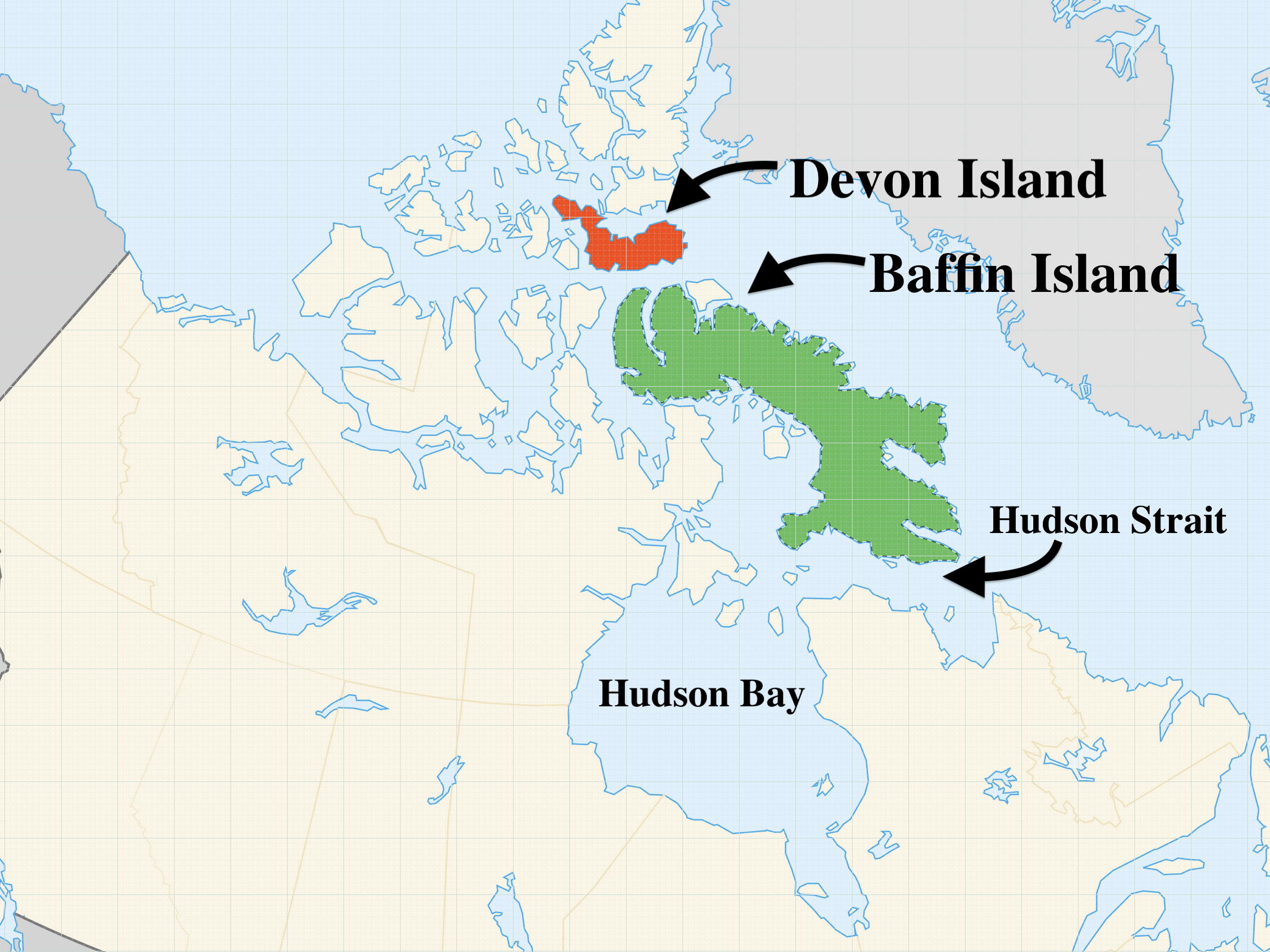
Baffin did, however, provide a wealth of intelligence about the Inuit who lived in the Arctic environment. He was one of the first Englishmen to make a close study of an umiak, a specimen of which he’d found abandoned on one of his voyages. Channelling the spirit of Champlain, Baffin (rightfully) criticized previous explorers for their handling of Indigenous relations. Although these Indigenous communities had a fearsome reputation in England, in his experience, Inuit communities were friendly unless provoked.
Baffin also admired the technology and adaptiveness of the Inuit. Their lightweight and leak-proof kayaks were far better-suited than European boats to maneuvering in the region’s icy waters. Much like Champlain, Baffin suspected that enlightened and humane co-operation with local Indigenous populations could provide just as much geographic intelligence as first-hand exploration by Europeans.
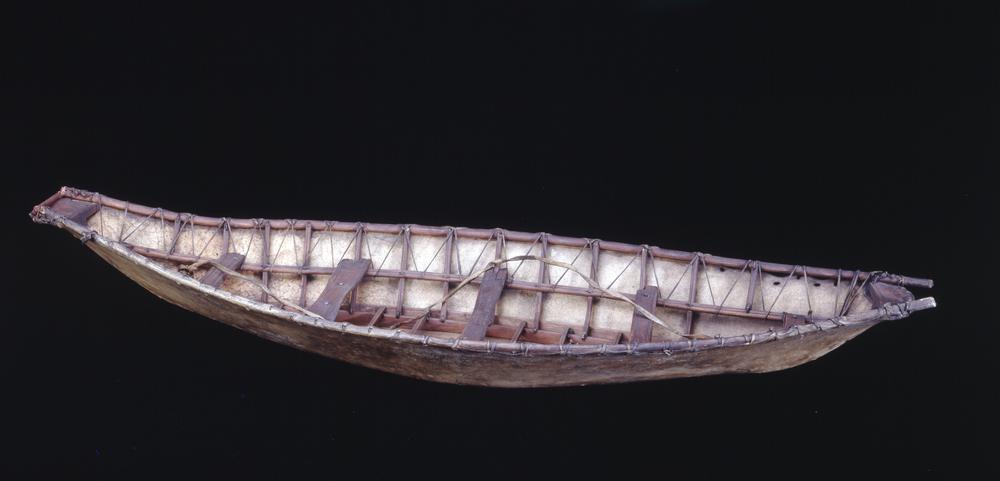
Notwithstanding Baffin’s anthropological investigations, however, by 1616 English enthusiasm for Arctic exploration was once again fading, just as it had four decades earlier, after Frobisher’s voyages. The initial excitement over Hudson’s discovery of a great bay had now given way to frustration at the lack of a navigable passage to either the Orient or to upstream portions of the St. Lawrence.
This was bad news for the veterans of Hudson’s voyage. As their knowledge of the Arctic was no longer useful to London’s investors and their powerful friends at court, they now had no one to protect them from legal prosecution in regard to Hudson’s death.
It’s also possible that these sailors were victims of a power struggle at the top of the English commercial world. Thomas Smythe’s dominant position in London was under assault from a faction led by Edwin Sandys and the Earl of Southampton. Primarily, Sandys and Southampton were interested in ousting Smythe from his position in the Virginia Company, but resurrecting the Hudson scandal was a useful way to discredit him.
Four of Hudson’s surviving crewmen were put on trial for murder in July 1618. While they were all acquitted, the scandal surrounding these proceedings signalled Smythe’s decline. Later that year, his rivals pushed him out of the Virginia Company, and Edwin Sandys took Smythe’s old office as Treasurer.
All of this leaves us with one final question: What happened to Henry Hudson, his son John, and the other seven men abandoned on the shallop?
The last any European saw of them were the mutineers on board the Discovery, who watched them disappear over the horizon behind them. It’s likely that Hudson gave up the chase soon after. Getting through the icy channel into the open North Atlantic would have been a tall order. And their primitive shallop wasn’t designed for the high seas. At best, they might be able to make it to Newfoundland and hope for aid from seasonal fishermen.
Hudson also had the shallop’s makeshift crew to think of. He and his son might have been in good health, along with Philip Staffe, the carpenter who’d joined them. But the other six men had been abandoned precisely because scurvy made them liabilities aboard the Discovery. Hudson didn’t have the manpower for an arduous journey.
His only option would have been to try to survive the winter on the south coast of Hudson Bay, and hope that a rescue party would arrive the following summer (or that he might be able to follow visiting Indigenous traders south toward the St. Lawrence, and somehow get rescued by the French).
In all likelihood, however, Hudson and his party died that first winter—though Button and the other explorers who visited Hudson Bay in the following years found no evidence of the marooned captain or his men. As already noted, by 1618, English authorities were sufficiently confident of Hudson’s demise to hold a trial for his murder.
But sixty years later, in the 1670s, long after all or most of the people described in this instalment had died, English explorers discovered the remains of what appeared to be a European-built cabin on an island in the Rupert River, which empties into James Bay, at the southern extremity of Hudson Bay. This would have been an area that Hudson had searched in 1610, as part of his quest for an inland route. They reported back to England that they may have found the final resting place of the ill-fated Henry Hudson. To this day, no one knows if they had.
In the next instalment, we’ll get back to Champlain, whose explorations on and around the St. Lawrence had effectively been geographically sandwiched, north and south, by Hudson’s adventures: Attentive readers will remember that in 1609, around the same time that the French cartographer was accompanying his Indigenous trade allies on a military expedition against the Iroquois in what is now upstate New York, Hudson was just a week’s hike to his south, exploring along what we now call the Hudson River.
The fact that Hudson had changed tack, and had now been exploring an area to Champlain’s far north, did not remain a secret for long: While English officials had been obsessed with maintaining operational secrecy back in Europe, they had no control whatsoever over Indigenous information networks. From the Cree in the north, on down through the Algonquins along the Ottawa river, and then to the Wendat, the word was out: Europeans had visited the great northern sea.
Champlain could not yet know that Hudson’s northern gambit would come to nothing. It was bad enough that Hudson had tipped the Dutch to a potential southern entry point to the St. Lawrence fur network via the Hudson River. If he’d found a northern one too, France’s dominance of the Canadian fur trade would be in jeopardy.







